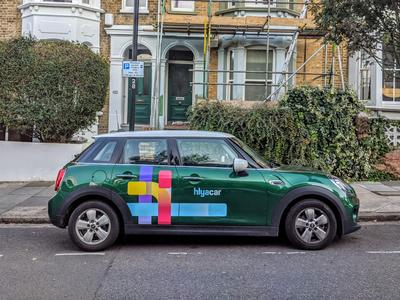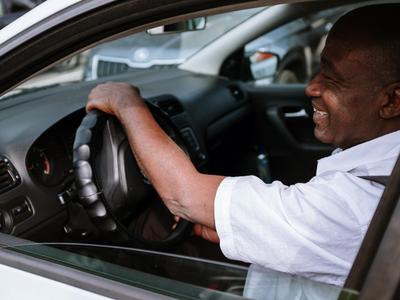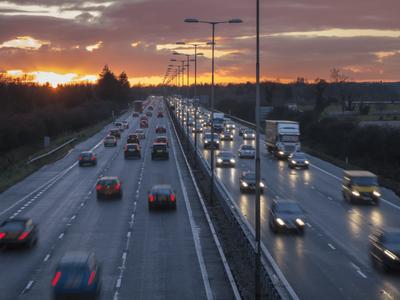
Mindfulness and Fuel-Conscious Driving: Fostering a Greener Connection on the Road
Mindfulness is all the rage in the health and wellness sector, but did you know that it can also help you become a more sustainable driver? Think about the fifth most common reason for vehicle accidents–speeding. One of the top reasons why people speed is that they are distracted. Their mind is too focused on worries—what they have to do, an argument they have had, and they can unwittingly push the pedal to the metal, risking their own lives and that of others. Speeding and other results of a lack of mindfulness also have a big impact on the environment. It causes increased fuel consumption, higher emissions, and noise pollution. If you wish to be a greener, safer driver, then mindfulness is definitely a strategy to adopt every time you get behind the wheel.
“Driving in mindfulness will make the time in your car joyful, and it will also help you avoid accidents. You can use the red traffic light as a signal of mindfulness, reminding you to stop and enjoy your breathing.”–Thich Nhat Hanh, ‘Father of Mindfulness’
How Much More Fuel Do You Consume When You Speed?
Increasing your highway cruising speed from around 90 km/h to 120 km/h can raise your fuel consumption by as much as 20%. You can improve your mileage by up to 15% and significantly lower your emissions by driving at 90 km/h instead of 104 km/h. The “sweet spot” in which to save less stands at between 50 km/h and 80 km/h for most vehicles (including cars, trucks, and SUVs). To be more mindful of your driving speed, start by turning off your phone completely and putting it out of sight and reach. Make it a point to check your speed every few minutes to make sure you are on track. If you have a “cruise control” function, use it whenever the road isn’t too packed with vehicles and if you are stressed, aim to keep your mind in the present moment by using the 4-7-8 breathing technique. It involves inhaling air for four seconds, keeping the breath in for seven seconds, and exhaling for eight seconds.
Choosing a Fuel-Efficient or Electric Vehicle
Whether you have your eye on an SUV or a tiny car, making a mindful, well-considered choice that takes a vehicle’s ranking into account in terms of fuel efficiency and eco-friendliness, is key. Sure, aspects such as power, storage space, and voice assistance are vital for your everyday driving enjoyment, but when making your comparisons, also look into CO2 emissions. Currently, there are a myriad of electric vehicles across nearly all vehicle categories. One study has shown that emissions from EVs are up to 43% lower than those of diesel vehicles. EVs may start with a bigger carbon footprint (because of the emissions involved during manufacturing) but this evens out in around 1.5 years. Purchasing a vehicle can be a difficult decision (as the expense is sizeable) so take your time and do your research instead of buying on impulse or basing your decision mainly on looks.
Planning Your Routes
Many of the biggest mistakes made by driving mindlessly result from rushed, last-minute, or haphazard decisions. If you know where you need to go the following day, plan your route well and avoid unnecessary or out-of-the-way trips. For instance, if you’re dropping your child at school and passing by a supermarket on the way back, do your shopping so you don’t have to make another trip expressly for this purpose. Keep your car as light as possible as well, immediately removing weighty items that you don’t actually need to use. What’s more, if you take the same route every day, consider carpooling or ride-sharing. A 2016 study has found that carpooling could save 33 million litres of fuel per day if each average commuting vehicle carried one additional passenger.
Embracing Eco-Friendly Driving Behaviours
The little things you do add up in terms of your total environmental impact on the road. For instance, when you avoid sudden braking and accelerations, you can improve your fuel efficiency and, therefore, reduce your emissions. Also, aim to reduce idling. If you’re waiting for someone, turn the motor off and restart it when you’re ready to get going again. Dedicate your time to a mindful activity such as observing your surroundings, saying positive affirmations to yourself, or taking part in a mindfulness meditation session.
Mindfulness can help you reduce bad habits such as speeding, which are tied to distraction. You can embrace mindfulness in many ways while you’re out and about. Breathing, checking your speed limit frequently, and trying to avoid focusing on your worries can all help you make wise choices. Planning and doing your research can also help with everything from mindfully choosing the right vehicle to avoiding unnecessary trips.
Explore our range of cars that can help you with your next steps in mindfulness driving.










